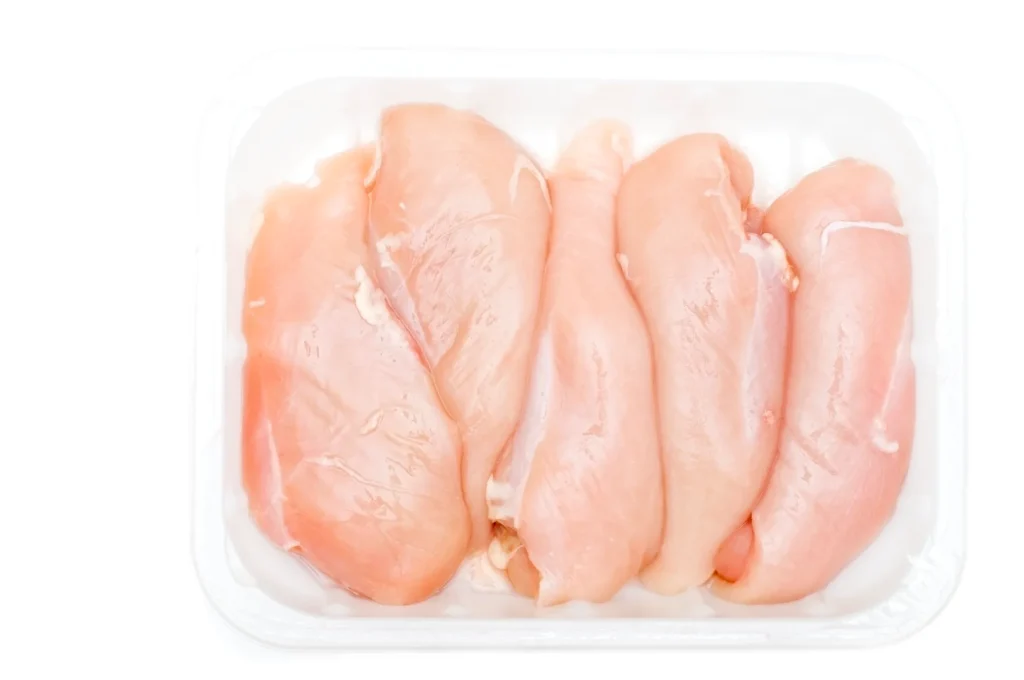Introduction
Thawing a frozen chicken breast might seem like a simple task, but doing it quickly and safely requires some know-how. Whether you forgot to take the chicken out of the freezer ahead of time or need to whip up dinner in a hurry, knowing the right methods can save you time and ensure your meal turns out just right. In this guide, we’ll explore several effective techniques to thaw frozen chicken breasts efficiently while maintaining food safety standards.
Understanding Food Safety
Before diving into thawing techniques, it’s crucial to understand the importance of food safety. Bacteria multiply rapidly between 40°F (4°C) and 140°F (60°C), a range known as the “danger zone.” To prevent foodborne illness, it’s essential to thaw chicken safely and cook it to the proper internal temperature. The USDA recommends cooking chicken to an internal temperature of 165°F (74°C) to kill any harmful bacteria.

Methods to Thaw Frozen Chicken Breast
1. Refrigerator Thawing
Refrigerator thawing is the safest method for thawing chicken breasts because it maintains a consistent, cold temperature, preventing bacteria growth. Here’s how to do it:
Steps:
- Place the frozen chicken breast in its original packaging or a leak-proof bag.
- Place the chicken on a plate or shallow pan to catch any drips.
- Place the plate or pan on the bottom shelf of the refrigerator.
- Allow approximately 24 hours for every 5 pounds (2.3 kg) of chicken. For individual chicken breasts, this usually takes about 6-12 hours.
Tip: If you need to thaw chicken quickly, consider using one of the following methods instead.
2. Cold Water Thawing
Cold water thawing is faster than refrigerator thawing but requires more attention to ensure food safety. This method is ideal if you need to thaw chicken quickly but have more time than using a microwave. Here’s how to do it:
Steps:
- Ensure the frozen chicken is in a leak-proof bag to prevent water from entering.
- Submerge the chicken in cold tap water. Change the water every 30 minutes to ensure it stays cold.
- Allow approximately 30 minutes per pound (0.45 kg) of chicken. A small package of chicken breasts (1-2 pounds) will thaw in 1-2 hours using this method.
Caution: Do not use warm or hot water as it can promote bacterial growth and compromise food safety.

3. Microwave Thawing
Microwave thawing is the quickest method but requires careful monitoring to ensure even thawing and to prevent cooking the chicken. Follow these steps for safe microwave thawing:
Steps:
- Remove any packaging or wrapping from the frozen chicken.
- Place the chicken on a microwave-safe dish and use the defrost setting or set the microwave to 50% power.
- Thaw in short intervals, flipping or rearranging the chicken every couple of minutes to ensure even thawing.
- Cook the chicken immediately after thawing to prevent bacterial growth.
Tip: Check your microwave’s user manual for specific defrosting instructions as they can vary.
Tips for Thawing Chicken Safely
- Use Cold Water Wisely: Cold water thawing is faster than refrigerator thawing but requires more attention. Ensure the chicken remains in a sealed, leak-proof bag and change the water every 30 minutes.
- Avoid Room Temperature Thawing: Never thaw chicken at room temperature as it can promote bacterial growth.
- Cook Immediately: Once thawed, cook chicken immediately to prevent the growth of harmful bacteria.
Conclusion
Thawing frozen chicken breasts quickly and safely is a valuable skill for any home cook. By following these methods—refrigerator thawing, cold water thawing, and microwave thawing—you can ensure that your chicken is thawed efficiently while maintaining food safety standards. Remember, proper thawing not only ensures a safe meal but also contributes to the overall quality of your dish. With these techniques in your culinary toolkit, you’ll be prepared to handle any last-minute meal preparation with ease and confidence.
Remember, the key to success lies in understanding the methods and applying them correctly. Whether you prefer the slow and steady approach of refrigerator thawing or need the speed of microwave thawing, choose the method that best fits your schedule and needs. Happy cooking!